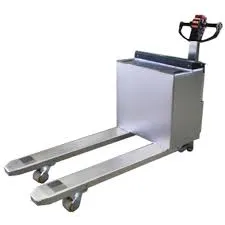


Understanding Crane Scales Essential Tools for Weight Measurement in Heavy Industries
In industries where lifting heavy loads is a daily necessity, crane scales have become an indispensable tool. These devices are designed to accurately measure the weight of objects being lifted, providing real-time data that enhances safety and efficiency in various operations, from construction sites to shipping yards.
Crane scales operate on a simple principle they utilize a load cell system that calculates the weight of the object based on the strain the load exerts on the scale. When a load is lifted, the crane scale adjusts to the weight and provides a digital readout of the mass, which is displayed prominently for easy visibility. This feature is particularly valuable in environments with busy operations where quick decisions and adjustments are required.
One of the standout advantages of crane scales is their versatility
. They can be used for a myriad of applications, including lifting machinery, shipping freight, and moving large construction materials. With advancements in technology, many modern crane scales come equipped with wireless capabilities, allowing operators to monitor weights from a distance, thus minimizing the risk of accidents and improving overall safety.
Moreover, crane scales are built to withstand harsh operating conditions. Whether exposed to heavy rain, extreme temperatures, or the dust and grime of industrial environments, these scales are engineered to maintain their accuracy and durability over time. This reliability is crucial for industries where precise weight measurements can affect load distribution and safety regulations.
Additionally, crane scales are often equipped with features such as overload alarms, which notify operators if the weight exceeds the capacity of the scale. This important safety feature helps prevent accidents that could result from lifting excessive weights, safeguarding both personnel and equipment.
For industries looking to enhance their operational efficiency, integrating crane scales into lifting procedures can lead to significant cost savings. By providing accurate weight readings, these scales help companies optimize their load management, streamline logistics, and reduce the risk of damage that can occur from overloading.
In conclusion, crane scales play a vital role in modern heavy lifting operations. Their ability to deliver accurate weight measurements in real-time not only enhances safety but also boosts productivity across various industries. As technology continues to evolve, crane scales will likely incorporate even more advanced features, further solidifying their importance in the world of industrial lifting and logistics. Investing in a high-quality crane scale is an investment in safety, efficiency, and operational excellence.



